Temple Layout - The temple is in a village located on the southern bank of the river 'Ketila', at the foot of the mountain range known as 'Copper Quarry'. The temple features a magnificent 5-tiered Rajagopuram facing east. A copper-armoured Dwajasthambam, Balipeetam and Nandi is in the outer prakaram, across the gateway. A sannidhi for Vinayaka is in the south-west corner of the outer prakaram and in the opposite north-west corner, is the sannidhi for Subramnya. Moving on to the inner prakaram through an entrance from the outer prakaram, we can see sannidhis dedicated to various deities including Vinayaka, 63 Nayanmars, Sapthamathas, Yugalingam and Gajalakshmi. The presiding deity of this temple, Vaamanapureeswarar, is manifested as a 'Swayambhoo Lingam'.
The temple is characterized by a unique feature, namely the presence of a curtain that conceals the view of the presiding deity. This curtain is strategically placed to maintain the undisturbed and undivided sacred union of the God and Goddess, who are revered as Shiva Shakti. The 'Palli-arai' pooja holds a special significance in all temples, particularly in those dedicated to Lord Shiva. Here the sanctum itself is considered to be the 'Palli-Arai' or sleeping quarters of the divine couple. Therefore 'Arthajama Palli-arai' pooja is not conducted at this particular temple. The priest opens the curtain only during the 'deeparadhana' ritual. It is during this time, the devotees get the rare opportunity to catch a glimpse of the small Shivalingam placed on a proportionate Avudaiyar. The curtain has an image of Bhimarudra. It is believed that Bhimarudra assumes the role of a guardian, ensuring that no hindrances come in the way of Mahavishnu's (as a 'maani' or brahmachari.) worship of Shiva. Bhimarudra is honored first through rituals. Then only, the curtain is removed and the presiding deity receives deeparadhana.
The 'Sthala vruksham' is 'Kondrai' and the 'theertham' is shwetha theertham and river ketila.
Temple Legend - The temple's legend revolves around Mahavishnu and Mahabali Chakravarthy, who was the grandson of the renowned Vishnu devotee Prahlada. Mahabali was known for his charitable nature and willingness to assist those in need. However, the celestial gods became envious of him and sought Mahavishnu's help to bring about his downfall. In order to accomplish this, Mahavishnu took on the form of a "Vamana Brahmmachari" to defeat Mahabali. Vamana approached Mahabali and requested three feet of land, which Mahabali readily agreed to. Mahavishnu then transformed into 'Thiruvikrama' and measured the entire earth with a single step, while his second step covered the entire universe. He then asked Mahabali what he could offer for the third step, to which Mahabali, left with no other choice, humbly offered his head. Impressed by his devotion, Mahavishnu pushed Mahabali down to the underworld ("Pathalam") and granted him immortality as one of the "Chiranjeevis."
It is believed that Mahavishnu visited this place as a "Maani" (Brahmachari or Bachelor) after his Vamana avatar and worshipped Shiva to seek relief from his "Brahmhathi dosham." As Vamana was of small stature and unable to see Shiva's face, Shiva took on a smaller form and appeared inside a pit ("kuzhi" in Tamil) to allow Mahavishnu to worship him. Hence this place is known as "Thiru Manikkuzhi" ("Thiru"-a respectful prefix, "Maani"-Bramachari, "Kuzhi"-pit.).
In his Pathikam, Sambandar refers to this place as Udhavimanikuzhi. This is further supported by inscriptions that also refer to the place as "Udhavi". Over time, it seems that the name of the temple Manikuli may have become the name of the town. Additionally, a merchant named Athri from the north was attacked by robbers in this place. The merchant sought help from Lord Shiva, who came to his aid and saved him from the robbers. As a result, Shiva is revered here as 'Udhavinayakar' and Devi as 'Udhavi Nayaki', both names praising their role as helpers. (Udhavi-help or assistance).
The 14th-century saint poet Arunagirinathar has sung one song in praise of Lord Muruga here. In this temple, Murugaperuman is seen with 12 hands, facing east, with his 2 beautiful consorts Valli and Deivanai, mounted on a peacock. The peacock is facing north.
The pathikam composed by Thirugnana Sambandar is in the third tirumurai.
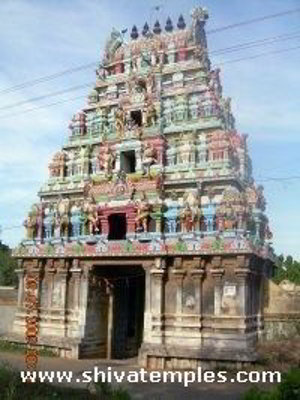 Gopuram
Gopuram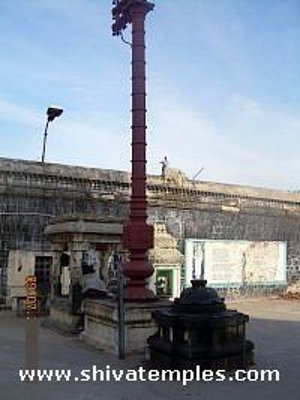 Dwajasthambam, Balipeetam, nandi mandapam
Dwajasthambam, Balipeetam, nandi mandapam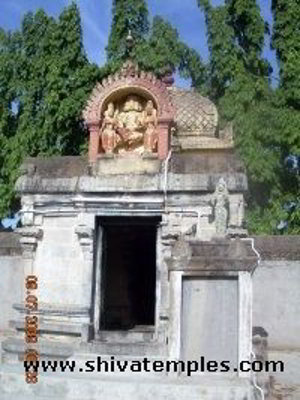 Vinayaka
Vinayaka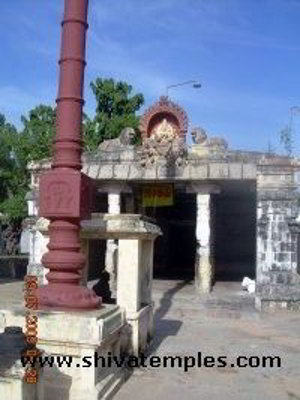 Dwajasthambam
Dwajasthambam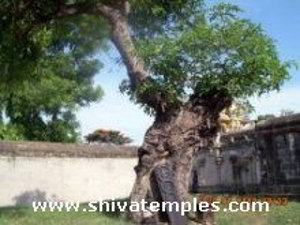 Sthala Vruksham
Sthala Vruksham 63 Nayanmar
63 Nayanmar Dakshinamurthy
Dakshinamurthy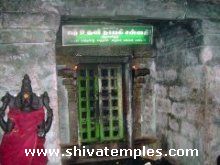 Udhavi Nayaki Sannidhi
Udhavi Nayaki Sannidhi Lingothbhavar, Mahavishnu & brahma
Lingothbhavar, Mahavishnu & brahma